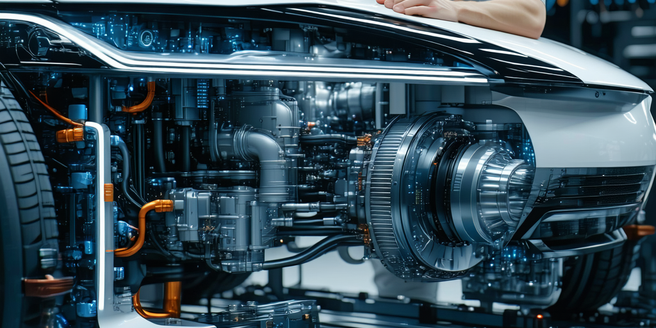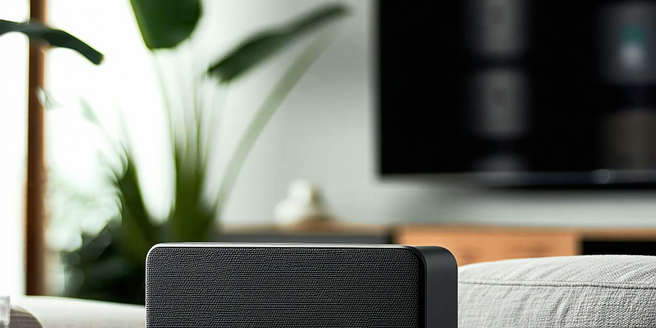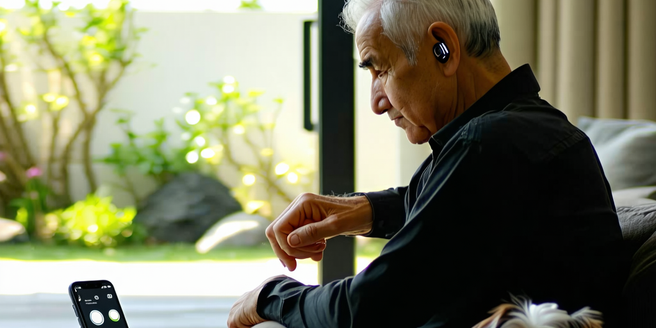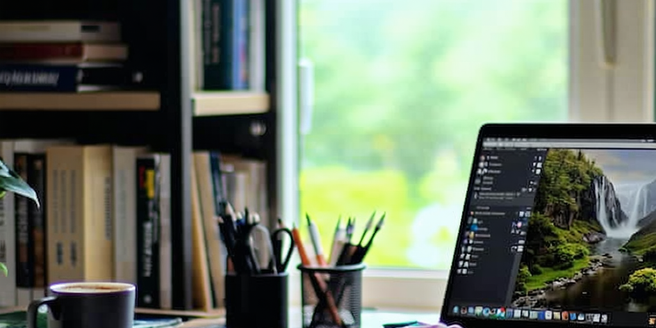
Electric Vehicles Revolution
The historical development of electric vehicles (EVs) saw a resurgence in the late 20th century, driven by advancements in battery technology and environmental concerns. Innovations, such as lithium-ion batteries, enhanced EV range and performance, leading to a market expansion supported by major automakers and startups. EVs offer environmental benefits by reducing tailpipe emissions and, as renewable energy sources grow, charging them becomes more eco-friendly. However, scaling EV infrastructure poses challenges, including expanding charging networks and upgrading power grids. Innovations such as solid-state batteries, wireless charging, and AI are shaping electric mobility's future. Government policies, including financial incentives and emissions regulations, are key in accelerating EV adoption, making them more affordable and promoting infrastructure growth.

Best Platforms For Virtual Team Building
Virtual team building platforms are transforming remote collaboration by offering tools that enhance communication and teamwork among geographically dispersed teams. These platforms integrate features like video conferencing, shared workspaces, and interactive games tailored to boost team rapport and spirit. As remote work grows, the importance of investing in these tools becomes evident for maintaining productivity and fostering a collaborative culture. Essential features to consider in such platforms include user-friendliness, scalability, diverse activity options, multiple communication modes, analytics, and security. Small teams benefit from platforms like Donut and Icebreaker that focus on personalized interactions, while large organizations may prefer comprehensive solutions like Zoom and Microsoft Teams. Evaluating a platform's effectiveness involves tracking user engagement, feedback, and communication improvements to ensure positive outcomes and an effective return on investment.

Neuralink And Brain-computer Interface
Promising advancements in brain-computer interfaces (BCIs) facilitate communication through neural activity, impacting industries like healthcare and gaming by enabling control of external devices via brain signals. BCIs offer transformative potential, aiding stroke patients and providing communication channels for those with disabilities. Neuralink, spearheaded by Elon Musk, aims to merge human brains with AI, enhancing cognition and treating neurological disorders with high-speed neural implants. The technology's applications span healthcare, memory enhancement, and military use, but ethical concerns over privacy and societal disparities arise. Addressing security and access is crucial as BCIs approach mainstream integration. The ongoing evolution of BCIs suggests a future rich with possibilities yet fraught with challenges regarding signal clarity, implant safety, and interdisciplinary collaboration.

E-learning Tools
E-learning platforms are revolutionizing the educational landscape by offering flexible and scalable solutions that cater to diverse learning needs. They enhance the learning experience through customizable content, multimedia elements, and interactive assessments, making them essential tools for both corporate training and academic courses. Acknowledging different learning styles, e-learning tools like Prezi, Canva, and Audible provide tailored experiences that boost engagement and retention. By integrating these tools with traditional education, educators create a hybrid model that enriches classroom instruction and prepares students for a digital future. As e-learning continues to evolve, trends like Artificial Intelligence and immersive technologies promise to further personalize and enhance the educational experience.

Quick-connect Earbuds For Instant Use
Quick-connect technology has transformed the use of wireless devices, offering near-instantaneous connections and enhancing user convenience. By reducing pairing time, it enables seamless transitions between tasks, such as listening to music or participating in calls. Quick-connect earbuds utilize Bluetooth and sometimes NFC technology for efficient pairing and switching between multiple devices. Popular models like Apple AirPods, Samsung Galaxy Buds, Jabra Elite 75t, and Sony WF-1000XM4 exemplify the benefits of quick-connect features, enhancing user convenience and audio experiences. When choosing earbuds, consider compatibility, battery life, sound quality, comfort, and additional features. To maximize battery life and connectivity, maintain and update devices regularly and adopt power-saving habits. These practices ensure optimal performance and longevity, making quick-connect gadgets essential for tech-savvy consumers.

Smart Hearing Aids And Sound Technology
Smart hearing aids are revolutionizing auditory technology by merging traditional amplification with modern digital features. These devices offer automatic sound adjustments, background noise filtration, and smartphone connectivity for enhanced control and customization. By integrating advanced algorithms and sensors, smart hearing aids cater to individual needs, improving communication and quality of life. They feature digital signal processing for clear audio, directional microphones for focused listening, and frequency manipulation for comfortable hearing. Key attributes include Bluetooth connectivity, noise reduction, rechargeable batteries, and adaptive sound processing. Unlike traditional aids, smart hearing aids provide superior sound and user experience with automatic adjustments and app control. AI plays a crucial role in sound processing, adapting to environments and user preferences. Future trends in hearing aid technology include more AI integration, seamless connectivity with smart devices, miniaturization, enhanced battery life, and possibly health monitoring features.

Drones In Agriculture
Drones are transforming modern farming by addressing agricultural challenges with real-time data collection and precision monitoring of crop health. Equipped with advanced sensors, drones capture comprehensive aerial views, detecting issues such as pest infestations and water distribution problems, ultimately improving farming precision and sustainability. They save time and resources by reducing labor-intensive field inspections. Drones offer high-resolution imagery that enhances crop monitoring, identifying nutrient deficiencies, and water stress with accuracy, allowing timely interventions that improve yield quality while minimizing losses. As part of precision agriculture, UAVs use GPS and remote sensing for detailed field surveys, optimizing planting, irrigation, and fertilization. Despite initial costs, drones can lead to long-term savings by reducing labor costs and preventing crop losses with early issue detection. Future trends involve AI integration, longer flight times, and improved regulations, ensuring drones play a crucial role in sustainable and efficient farming.

Digital Twins In Product Development
Digital Twin technology serves as a digital replica of physical assets, processes, or systems, enabling simulations for predictive maintenance, optimizing operations, and supporting real-time decision-making. By bridging the physical and digital worlds, digital twins enhance resource efficiency and contribute to sustainability. They are a fundamental component of IoT and Industry 4.0, transforming industries by providing a comprehensive framework for performance monitoring. Key benefits include enhanced product development, proactive maintenance, and improved collaboration across departments. Digital twins are finding applications in healthcare, optimizing energy usage, and driving innovation. In product design, they facilitate better simulations, accelerating innovation and reducing costs while ensuring superior quality. Success stories span aerospace, healthcare, manufacturing, and automotive sectors. Future trends highlight the integration of AI and machine learning, improved data privacy, and expanded IoT networks, setting the stage for more interconnected and efficient digital ecosystems.

Video Conferencing Tips With Virtual Tools
Video conferencing software is a vital tool for seamless remote communication, offering features like screen sharing, recording, and chat functions. Selecting software that fits your needs and becoming familiar with its basic operations, such as meeting scheduling and audio/video settings, enhances user experience and meeting productivity. Setting up an ideal virtual environment involves choosing a quiet, well-lit space, optimizing camera and audio setups, and ensuring a stable internet connection, all of which contribute to professional virtual interactions. Collaborative tools like instant messaging, project management, and document-sharing platforms enhance team collaboration, while virtual meeting best practices, such as setting clear agendas and utilizing engagement tools, keep sessions interactive and focused. Troubleshooting common issues by checking hardware settings and ensuring software updates can help maintain smooth virtual meetings. Leveraging advanced features like breakout rooms, annotation tools, and automated transcriptions can further boost productivity and engagement during virtual sessions.

Enhancing Remote Team Collaboration
Enhance your website's SEO by focusing on key insights for remote team success. Highlight how technology facilitates seamless communication through video conferencing, instant messaging, and cloud-based platforms, enabling effective collaboration and real-time interaction. Emphasize the importance of building trust in virtual environments by establishing clear communication, setting transparent goals, and engaging in virtual team-building activities. Showcase effective project management tools like Trello, Asana, and Jira that streamline workflow and enhance accountability. Underline the significance of establishing clear goals and expectations using platforms like OKRs to drive team success. Promote an engaging online team culture through regular interactions, inclusivity, and recognition programs, which improves morale and productivity. Finally, stress the importance of flexibility and work-life balance by encouraging flexible hours and wellness programs to prevent burnout and enhance overall wellbeing.

Video Call Preparation
Choosing the right video conferencing tool is essential for successful virtual meetings. Consider your specific needs, including participant capacity, collaboration features, and platform compatibility. Look for features like screen sharing, recording, and application integration. Evaluate the user interface, ease of use, and security features to protect data. Popular options include Zoom, Microsoft Teams, and Google Meet. Proper equipment setup enhances call quality; ensure you have a high-resolution camera, reliable microphone, stable internet connection, and good lighting. Create a distraction-free environment with a quiet location, tidy background, and minimized notifications. Test audio and video settings prior to calls to prevent technical issues. A clear agenda and effective communication techniques, such as speaking clearly and using active listening, boost engagement.

Wearable Tech For Fitness Monitoring
Explore the fast-evolving world of wearable technology, where devices like smartwatches and fitness bands serve as personal health monitors. With the ability to track heart rate, steps, and sleep patterns, these gadgets offer real-time insights, helping users make informed lifestyle choices. Among the top picks for fitness enthusiasts are the Apple Watch, Fitbit, and Garmin, each offering unique features such as GPS tracking and heart rate monitoring. Selecting the right wearable involves considering factors like compatibility, battery life, and essential features tailored to your fitness goals. Future trends indicate an exciting growth in AI capabilities, biometric sensors, and eco-friendly designs, transforming wearables into comprehensive health management tools. Stay ahead of the curve by understanding the key benefits and trends in wearable fitness technology.